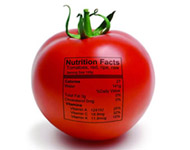Nutrition and Health Sciences, Department of
Document Type
Article
Date of this Version
2005
Abstract
Research suggests that omega-3 fatty acids (n-3 FAs) play an important role in reducing the risk of heart diseases. The objectives of the current study were to investigate the consumption and the food sources of n-3 FAs in two samples of elderly men living in different geographic locations (coastal and internal regions) of Saudi Arabia. Sixty men from each of the coastal and the internal regions provided a 24-hour recall and 2-day food record and a food frequency questionnaire. Food Processor Plus computer program software (ESHA Version 0.7; Salem, Oregon, 2002) was used to analyze the dietary intake. The intake of total n-3 FAs, alpha-lenolenic acid (ALA), eicosapentaenoic acid (EPA) and docosahexaenoic acid (DHA) were higher among the coastal region residents than among the internal residents (P < 0.05). English walnuts, salmon, canola oil, malabar cavalla and king mackerel were the top five foods contributing to the n-3 FA intakes in the coastal region. The top five foods contributing to the n-3 FA intakes in the internal region were English walnuts, lamb, whole milk, baked beans and chicken. The food contributing the most to the intake of n-3 FAs in both regions were English walnuts. In conclusion, the food consumption pattern for food providing n-3 FAs differs by location and coastal residents consume more than twice as much n-3 FAs as internal residents. Nutrition education intervention among internal residents is needed for increasing the consumption of n-3 FAs.


Comments
Published in Pakistan Journal of Nutrition 4 (2): 106-111, 2005. ISSN 1680-5194 Copyright © Asian Network for Scientific Information, 2005